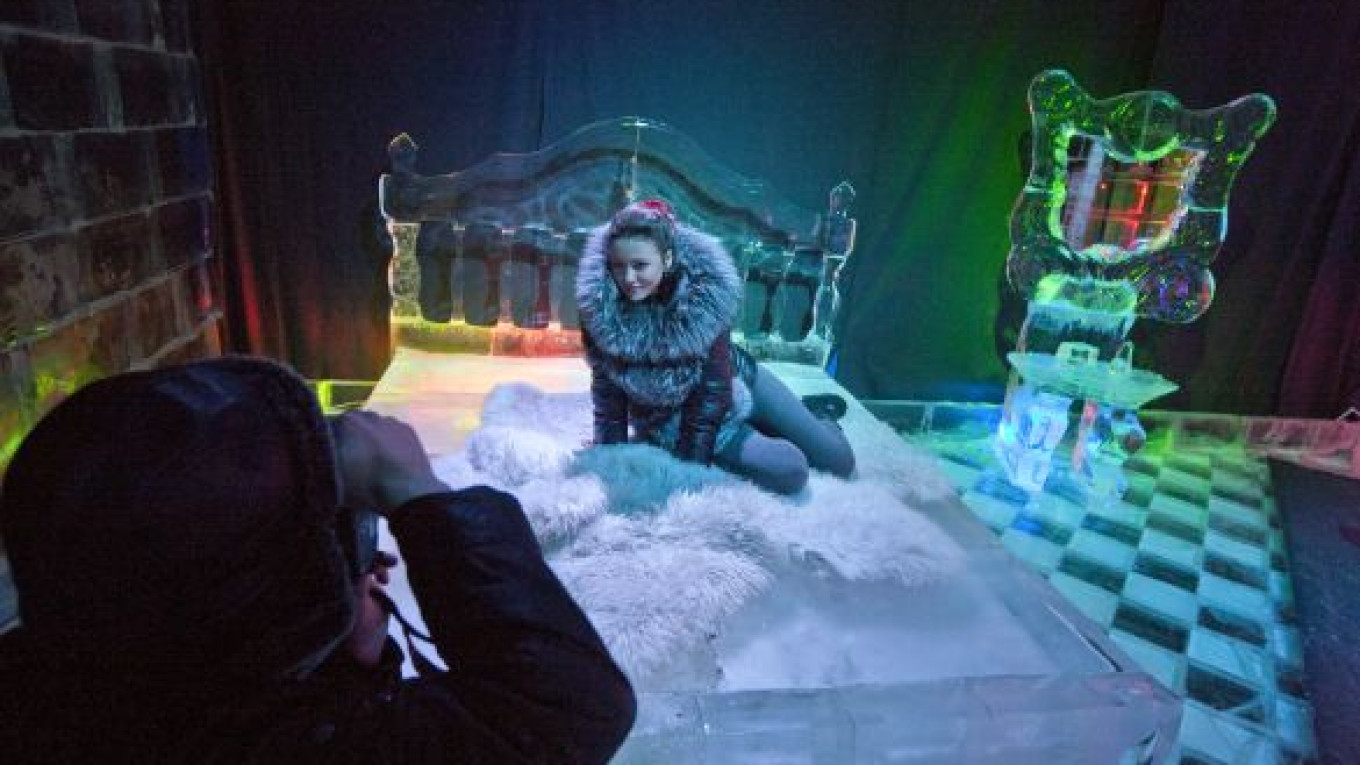With winter having finally arrived, a new city has sprung up within Moscow, made entirely of ice and snow. Located in Sokolniki Park, Moroz City (Frost city) claims to be the first-ever snow city in Russia. The architectural feat required 500 blocks of ice, 1,000 blocks of snow and more than 100 architects, sculptors, artists and volunteers from all over Russia, Ukraine, Estonia, Serbia, Belarus and Finland.
The city took many days to construct and encountered various problems and delays throughout. Due to rain and plus temperatures the sculptors could often only work at night and the first visitors were overly touchy and caused damage. The displays still require constant monitoring and maintenance and the temperature at the site must be controlled due to the particularly warm Moscow winter.
"We have been experimenting with this work for years. Many of the architects and sculptors behind this project are renowned in their fields and have won awards at festivals in both Canada and France," Darya Lisitsyna, art director of Moroz City, told The Moscow Times.
"We decided it was time to really showcase the skills and talents of our architects and sculptors in Russia," she said.
Despite the delays, Moroz City welcomed an influx of curious visitors on its first weekend. Visitors are able to act out entire lives within the 2,500 square-meter ice confinements, as long as they don't mind the temporary state of their lifestyle. Most creatively notable is the philharmonic society, where you can play working ice instruments. Leisure facilities include a banya, crazy golf and a cinema, although these are display only. Children seemed to particularly enjoy trapping themselves in the ice maze, launching themselves down the ice slide on sledges and pretending to be Russia's most hardened criminals in the jail. The jail is what you might imagine a real Russian gulag to be like — freezing, very small and with only a few ice bars providing a glimpse of Siberia's most common attribute, snow. Had Moroz City existed during the height of the gulag's popularity within the Russian justice system, perhaps the government would have even drawn a lesson from the jail and changed their choice of building material to permanently frozen ice.
Moroz City really comes into its own after sunset. The unique skills of the architects and designers become apparent as all the structures are softly illuminated in the dark, with various colors shining through the transparency of the ice. Climbing up the ice lighthouse provides a particularly impressive view of the illuminated festival and of some of Sokolniki park. Display only in daytime, the ice disco floor is suddenly lit up with disco lights, transforming into a small exhibition of Russians' dancing skills. However, the later in the day, the more perilous the dance floor becomes as the ice becomes more exposed. In general, shoes with the best grip are necessary for the entire park, as the areas protected from snowfall are especially slippery.
The tradition of buildings of ice and snow dates back to the 18th century in Russia. In 1740, Anna Ivanovna ordered the construction of an ice palace in her honor. According to Ivan Loktyukhin, a sculptor for Moroz City who has won awards for his work, the tradition started on a morbid note: "Legend says Ivanovna ordered the marriage of two dwarfs who were forced to spend their wedding night in an ice bed and died." On further research, it seems this story has several versions, but the warning is clear: Ice isn't habitable.
Nonetheless, Moroz City architects have tried to combat this in their construction of their own ice hotel, which appeared to be the most popular feature of the festival. Many people relaxed at the bar, while the large double ice bed played host to posing women festooned in fur coats. The hotel architects lend the coats free of charge, in order for the visitors to have enough time for a full Russian-style photo shoot without freezing into part of the display themselves. For the same reason, all the seating is covered in cushions.
The organizers say there will be several special events to look forward to at the architectural festival, the next being "Days of Crystal Clear Design" on Feb. 11 and 12. Full details for all events can be found on the Moroz City web site.
Moroz City is open every day from 10 a.m. to 10 p.m. till March 8, weather permitting. Entry is 150 rubles ($5) for children and 250 rubles for adults. Sokolniki Park, Metro Sokolniki. Tel. 8-916-655-7022. .


